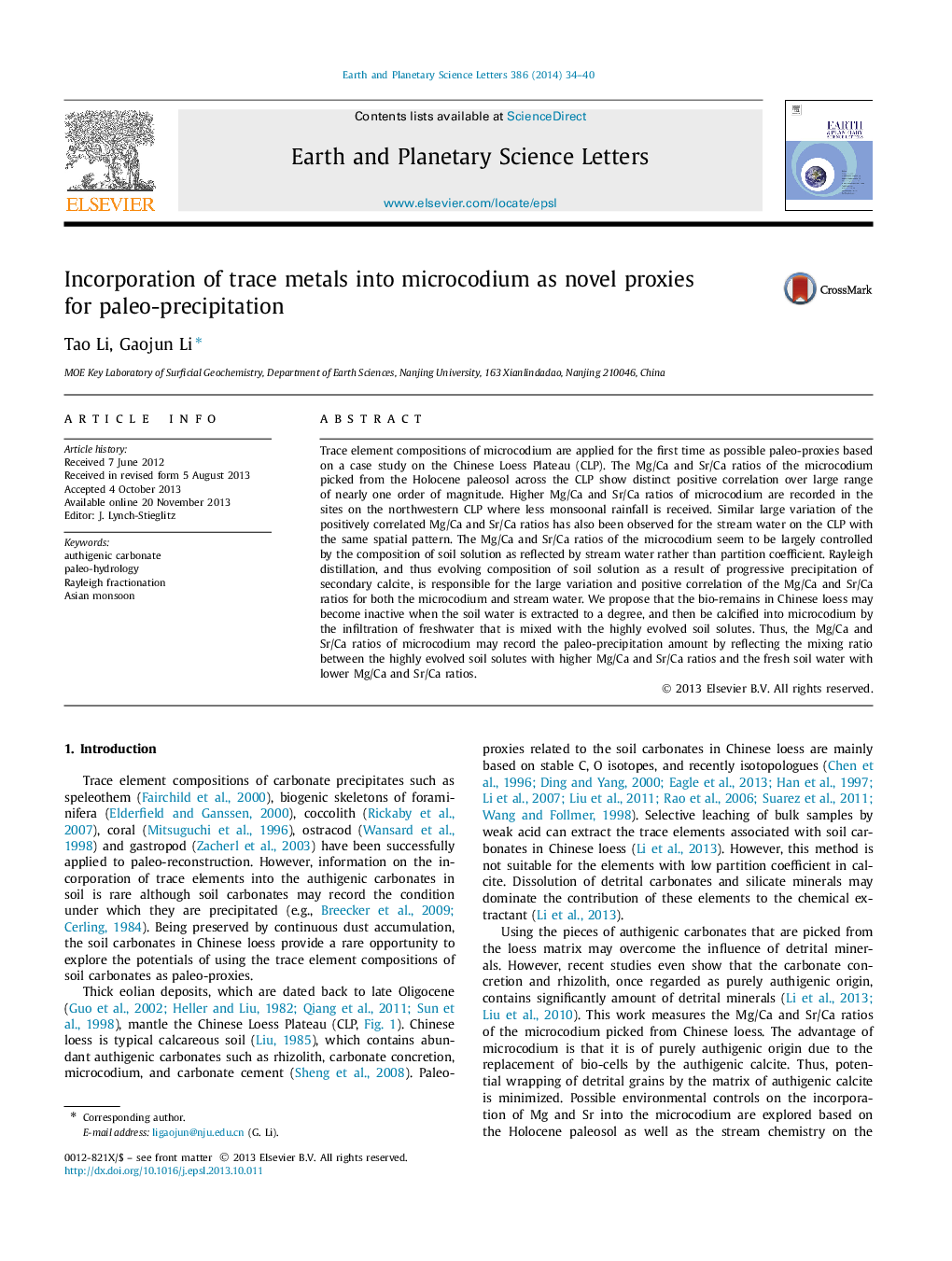| Article ID | Journal | Published Year | Pages | File Type |
|---|---|---|---|---|
| 6429821 | Earth and Planetary Science Letters | 2014 | 7 Pages |
â¢Trace elements of microcodium are measured for the first time.â¢Rayleigh distillation controls the Mg/Ca and Sr/Ca ratios of microcodium.â¢Mg/Ca and Sr/Ca ratios of microcodium are proxies for precipitation.
Trace element compositions of microcodium are applied for the first time as possible paleo-proxies based on a case study on the Chinese Loess Plateau (CLP). The Mg/Ca and Sr/Ca ratios of the microcodium picked from the Holocene paleosol across the CLP show distinct positive correlation over large range of nearly one order of magnitude. Higher Mg/Ca and Sr/Ca ratios of microcodium are recorded in the sites on the northwestern CLP where less monsoonal rainfall is received. Similar large variation of the positively correlated Mg/Ca and Sr/Ca ratios has also been observed for the stream water on the CLP with the same spatial pattern. The Mg/Ca and Sr/Ca ratios of the microcodium seem to be largely controlled by the composition of soil solution as reflected by stream water rather than partition coefficient. Rayleigh distillation, and thus evolving composition of soil solution as a result of progressive precipitation of secondary calcite, is responsible for the large variation and positive correlation of the Mg/Ca and Sr/Ca ratios for both the microcodium and stream water. We propose that the bio-remains in Chinese loess may become inactive when the soil water is extracted to a degree, and then be calcified into microcodium by the infiltration of freshwater that is mixed with the highly evolved soil solutes. Thus, the Mg/Ca and Sr/Ca ratios of microcodium may record the paleo-precipitation amount by reflecting the mixing ratio between the highly evolved soil solutes with higher Mg/Ca and Sr/Ca ratios and the fresh soil water with lower Mg/Ca and Sr/Ca ratios.
